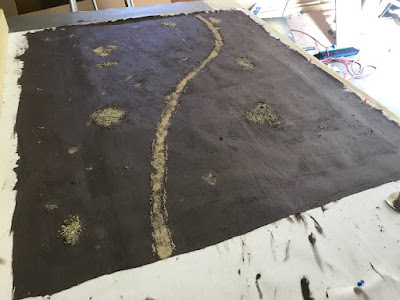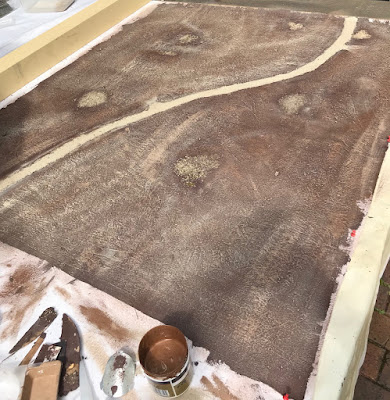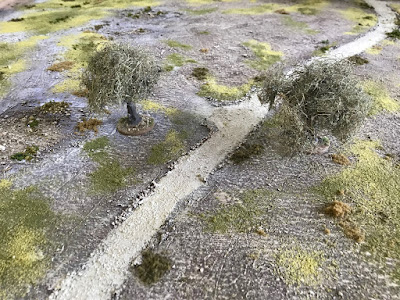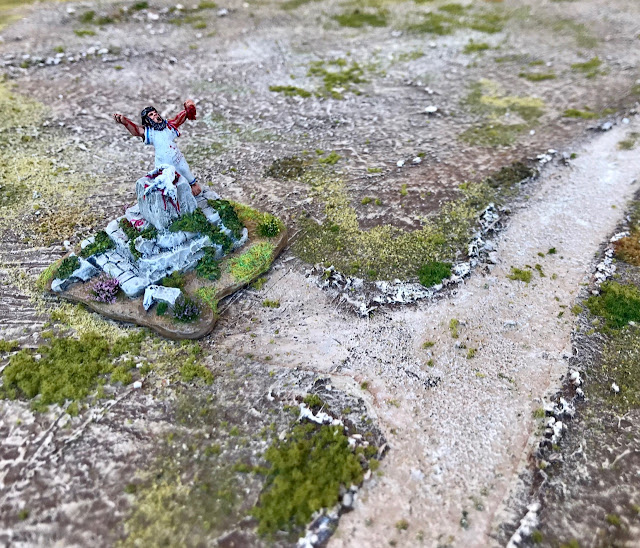Background
Last fighting season the Mallardian army, fresh from its successes over the Spring, besieged the Hopsland border city of Haresburg. While parts of the city were raised and sacked, the invaders were finally ejected from the walled city and both sides regrouped over winter. When the snows melted the Mallardians attacked from their captured territories, only to find found a renewed Hoplandian force arrayed for battle before them on Clapgate Common. Would the defenders break through and take the city this time? Or will the Rabbit Army successfully defend its ground and shift onto the offensive…
Umpire Notes: The use of an Umpire, at least for the first half of this game, was found to be essential. I really pushed the envelope of multiplayer gaming with this scenario, enabled by the simplicity of DR’s tactical rules, and it became a little overwhelming at times. I was also going to add some weather effects and was glad I did not.
Units: As part of their greater Army, each player has a 30 point force under their command, and will be allocated a battle position on the day by their CinC. Players wearing a Fez or Hawai’ian short earn an additional 1 point (for each). Each player must designate one of their units as their Sub-General.
Army Generals are represented with an additional elite foot or cavalry bodyguard unit, attached to the CinC Player’s force and in addition to their 30 (or 31, or 32) points.
Each Army also has a Reserve Units of 30 points held offboard at game start (see the Reserves Special Rule) and controlled by the CinC
The Combatants:
Mallardian Army of One True Duck – 4 Players (1 designated as CinC)
Hopslandian Scions of the White Rabbit – 4 Players (1 designated as CinC)
Deployment:
Table size: 12 x 6 (adjust to suit)
Scout and Light Cavalry units: start the game 12 inches onto the table
Some sectors will have special rules for the terrain, such as hidden deployment (Umpire discretion)
Umpire Notes: Each 'sector' of the table had a special terrain feature to focus the two opposing players. Both players were told that some area looked 'interesting' - once a unit got to that location they had to activate it (as a move action) to find out what it was. This varied between areas - the Cemetery made it easier to resurrect undead (or harder if the opponent held it), a building turned out to have a stash of weapons which upgraded a single unit etc. This worked well in general but was another layer of complexity.
Multiplayer Rules – players will generally fight against their opposite number across the table, but must stop once both players have completed their turns to keep in synch with the other players (though feel free to attack other enemy units at your convenience of course). This coordination will be important to the wider battle and the umpire will coordinate.
Victory Conditions:
Uncontested control of a table area: 15 points
Destruction of an enemy force: 30 points
Killed Enemy CinC: 20 points
Killed Enemy Sub-General: 10 points
Key Objectives: as designated
Special Rule: Reserves.
Each Army has a Reserve force of 30 points which starts off the table on Turn 1, and behind one of the players’ armies on the table, at the CinC’s choice. The Reserves cannot enter the table until after Turn 5, but can shift laterally as they await their chance for glory. Once all Sub Generals have finished their turn, the CinC can either leave the Reserve in place or try to move it. To do so, the CinC must successfully roll to activate the Reserve Force’s Sub General unit for a Movement action. If this is successful, the reserve force can relocate laterally by one player position (ie if it was loitering behind the second player it can move to be behind the first or third player, but not the fourth). This moves all units in the Reserve together - as it is easier to have units obey when not engaged with the enemy and in march order.
From the end of Turn 5 the CinC may choose to either leave the Reserve where it is, move it as usual or bring it onto the field from its current location. The mechanism to bring the Reserve onto the table is the same as moving it, and if successful, it will begin entering from the table edge in the next turn.
Umpire Note: Assigning this force to a player who had fared badly in the first few turns of the battle was a good way of keeping them involved in the game.
Special Rule: Possible Turncoat!
Intrigue and treachery are all part of war and both side are playing for keeps. Spies and envoys are everywhere, currying favour and coaxing some to switch sides with the promise of riches and women with huge tracts of land. Will the foe before you see the error of his ways become your friend? Or will the comrade guarding your flank turn and stab you in the back…
At the end of the second turn players will randomly select a chit from a bag or cup – in it there will be two ‘Loyal’ chits per player and a single ‘Traitor’ token. Keep your result secret! The traitor, if there is one, can declare any time he chooses and must do so by the end of his Turn 5. After announcing, he immediately takes another turn, fighting for the other side – the benefit of surprise and treachery. The betrayed force immediately gains 25VPs for the infamy and notoriety of the enemy.
Umpire’s Note: I took inspiration for this special rule from a Warhammer Scenario in the General’s Compendium – it generated an appropriate amount of mayhem and chaos!
Overall, I was pleased by the way this big game scenario worked, having done a bit of work to ensure that all players were kept engaged and busy throughout. In the CinC role think we found the limit of what one player can comfortably manage and I would suggest that perhaps keeping the CinC as a seperate player, in charge of the Army reserve, would be useful - and allow you to expand to a 10 player game. In the end, everyone got a lot of toys on the table, lots of dice were rolled and it was a fun and noisy environment filled with laughs: the best kind of gaming.
























































